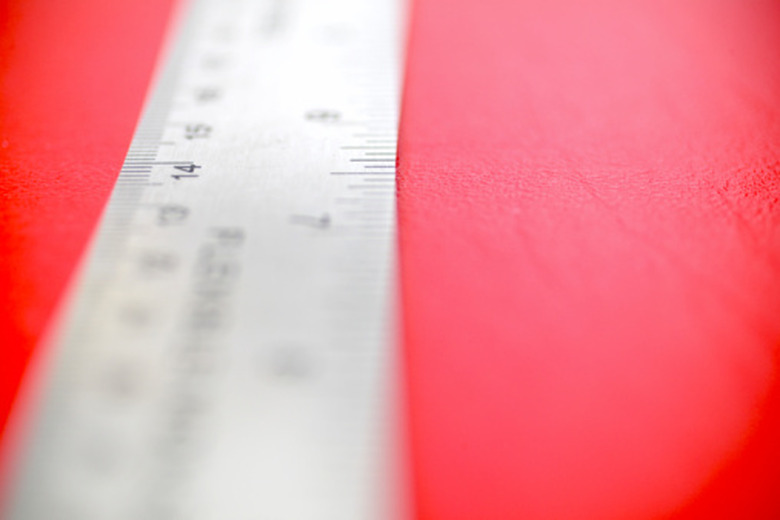How To Draw An Equilateral Triangle Without A Compass
An equilateral triangle has three congruent sides and three congruent angles, each measuring 60 degrees. Mathematicians usually construct them inside a circle, which they draw with a compass. However, if you do not have a compass, you can draw the triangle without using the circle guide by measuring each side carefully with a ruler. Because each angle is related to the length of the sides as described by the Law of Cosines, when all the sides are equal, all the angles will also be equal.
Step 1
Draw the base using a ruler. Take note of the exact length of the line.
Step 2
Divide the length by two. This gives you the distance to the line's midpoint.
Step 3
Draw a line perpendicular to the base at the midpoint. This is called the perpendicular bisector.
Step 4
Align the zero mark on the ruler with one end of the base.
Step 5
Rotate the ruler until the mark representing the length of the base line touches the perpendicular bisector. If it cannot touch, extend the bisector.
Step 6
Draw the line, then repeat this process to draw the third line. You now have a triangle with three congruent sides and three congruent angles, or an equilateral triangle.
References
Cite This Article
MLA
Arnold, Kylene. "How To Draw An Equilateral Triangle Without A Compass" sciencing.com, https://www.sciencing.com/draw-equilateral-triangle-compass-8607154/. 24 April 2017.
APA
Arnold, Kylene. (2017, April 24). How To Draw An Equilateral Triangle Without A Compass. sciencing.com. Retrieved from https://www.sciencing.com/draw-equilateral-triangle-compass-8607154/
Chicago
Arnold, Kylene. How To Draw An Equilateral Triangle Without A Compass last modified March 24, 2022. https://www.sciencing.com/draw-equilateral-triangle-compass-8607154/
